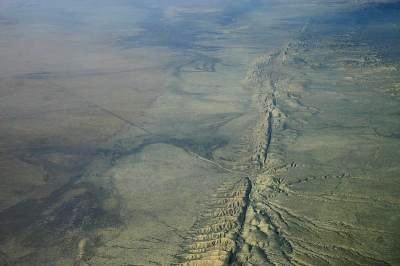US researchers have found a way to monitor geological faults deep in the Earth that could help them predict an imminent earthquake more precisely than with other methods. This is the first time that scientists have been able to detect temporal changes in fault strength at seismogenic depth from the Earth’s surface.
The late Paul Silver and Taka’aki Taira of the Carnegie Institution’s Department of Terrestrial Magnetism, working with Fenglin Niu of Rice University and Robert Nadeau of the University of California, Berkeley, used highly sensitive seismometers to detect subtle changes in earthquake waves that travel through the San Andreas Fault zone near Parkfield, California, over a two-decade time span.
“Fault strength is a fundamental property of seismic zones,” explains Taira, who has moved to the Berkeley since the research was done. “Earthquakes are caused when a fault fails, either because of the build-up of stress or because of a weakening of the fault. Changes in fault strength are much harder to measure than changes in stress, especially for faults deep in the crust. Our result opens up exciting possibilities for monitoring seismic risk and understanding the causes of earthquakes.”
Seismologists have focused the San Andreas Fault near Parkfield, the “Earthquake Capital of the World,” for years. The site has a sophisticated array of borehole seismometers, the High-Resolution Seismic Network, as well as other geophysical instruments in situ. Researchers consider it a natural laboratory for seismology because of the frequent quakes that occur there.
Earlier studies have suggested that there are fluid-filled fractures within the fault zone and that these shift. When this happens, “repeating” earthquakes apparently become smaller and more frequent, which researchers say is indicative of a weakened fault. “Movement of the fluid in these fractures lubricates the fault zone and thereby weakens the fault,” says Niu.
“The total displacement of the fluids is only about 10 metres at a depth of about three kilometres, so it takes very sensitive seismometers to detect the changes, such as we have at Parkfield.” Niu further explains that it seems to be distant earthquakes that cause the fluids to shift, such as the 2004 Sumatra-Andaman Earthquake, which led to tsunamis throughout the Indian Ocean that year.

The authors speculate that such large events should produce a temporal clustering of global seismicity, a hypothesis that appears to be supported by the unusually high number of large earthquakes occurring in the three years following the 2004 earthquake. The team presents additional evidence that a similar phenomenon occurred following the 1992 Landers earthquake.
LINKS
Nature, 2009, 461, 636-640
Department of Terrestrial Magnetism at the Carnegie Institution of Washington
Northern California Earthquake Data Center (NCEDC)